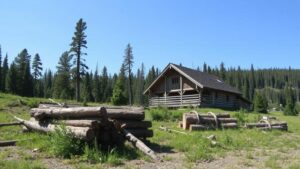Tracking Down Oral Accounts from Early Prospectors for Gold Leads
Tracking Down Oral Accounts from Early Prospectors for Gold Leads
The discovery of gold has historically driven significant migrations, economic booms, and societal transformations. Early prospectors played a pivotal role in revealing gold deposits across various regions, their narratives often serving as invaluable resources for future miners and historians alike. This article explores methodologies for tracking down oral accounts from early prospectors, their reliability, and implications for contemporary mining operations.
Historical Context of Gold Prospecting
The gold rush era, notably from the mid-19th century, saw an influx of individuals seeking fortune in various locations across North America, Australia, and beyond. California Gold Rush of 1848, spurred by James W. Marshalls discovery of gold at Sutters Mill, marked a significant point in American history, catalyzing the movement of over 300,000 prospectors to the West.
States such as Alaska, Nevada, and Colorado also became epicenters for gold prospecting following significant finds, contributing to their economic development. The methods these prospectors employed–ranging from basic panning to more sophisticated hydraulic mining techniques–provide a foundation upon which modern mining strategies can be built.
Importance of Oral Accounts
Oral histories remain crucial to understanding the human aspects of gold prospecting. e narratives not only capture the experiences of prospectors but also offer insights into the geologic features they encountered, the methods they employed, and the social dynamics within mining camps.
For example, oral accounts from the Klondike Gold Rush (1896-1899) provide rich information about the hardships faced during the treacherous journey to the Yukon territory, which impacted mining strategies in the region.
Methodologies for Collecting Oral Histories
The collection of oral accounts involves various methodologies that can yield rich and authentic narratives. The following approaches are commonly employed:
- Interviews: Conducting structured or semi-structured interviews with descendants of early prospectors or individuals familiar with mining history helps to capture firsthand accounts.
- Archival Research: Utilizing local libraries, historical societies, and online databases can uncover recorded interviews, newspaper articles, and diaries that contain oral narratives.
- Field Research: Visiting historical mining sites and engaging with local historians or community elders can provide contextual insights and facilitate additional oral accounts.
Evaluating the Reliability of Oral Accounts
While oral histories are immensely valuable, their reliability can vary greatly. Several factors must be considered when assessing these accounts:
- Contextual Consistency: Cross-checking stories against documented events provides a method for validating the credibility of oral accounts.
- Corroborative Evidence: Supporting findings through archaeological evidence or historical records enhances the reliability of the narratives.
- Bias and Memory Variability: Understanding the personal biases and potential memory distortions in recollection is crucial for a balanced interpretation.
Case Studies: Notable Oral Accounts
Several documented oral histories illustrate the richness and complexity of gold prospecting experiences. One famous account is that of prospector Soapy Smith in the Klondike, whose rise to prominence and eventual downfall serves as a cautionary tale about the lawlessness of gold rush towns. His story has been preserved in various forms, showcasing the complexities of individual narratives amid a collective search for wealth.
Another significant figure, Sam Brannan–the first millionaire of the California Gold Rush–used his experiences and insight to facilitate the sale of supplies to incoming miners, thereby shaping the economic landscape of the period. His life exemplifies how oral histories not only reflect personal endeavors but also broader economic patterns related to gold prospecting.
Implications for Modern Mining Operations
Understanding early prospectors oral accounts offers valuable insights into contemporary mining practices. Oral histories can guide modern prospectors by revealing persistent mining patterns, effective methods, and potentially overlooked sites ripe for exploration.
Plus, as generational knowledge persists, current mining operations can benefit significantly by integrating traditional practices with modern technology, leading to more sustainable and efficient operations.
Conclusion
Tracking down oral accounts from early prospectors is invaluable for both historical scholarship and practical applications within modern mining. By leveraging these narratives through effective methodologies, the mining industry can uncover lost knowledge that promotes more informed decision-making today. Ultimately, the oral histories of past prospectors stand as a testament to human endeavor and adaptability, offering profound lessons for future generations.
For researchers and industry practitioners, the actionable takeaway is to prioritize the collection and analysis of oral histories, utilizing a systematic approach to preserve these accounts while ensuring their historical integrity. This fusion of past experiences with present technologies can pave the way for innovations in mining practices and heritage preservation.



